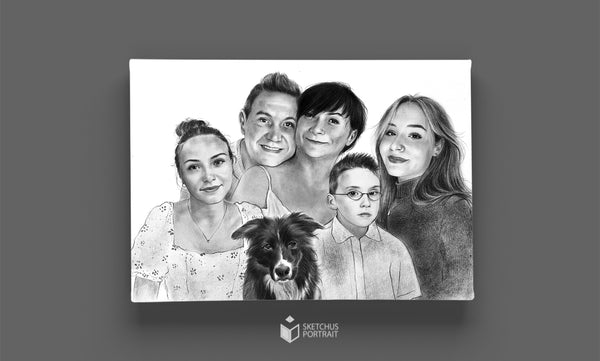Definition for portrait - What types of portraits are there?
Definition of portrait simply explained
Many people ask themselves what a portrait actually is? Portrait is derived from the French word and is understood as a portrait or photographic image of a person.

When cropping a portrait, the whole body, a bust, the head or just the face of the person is shown. The aim is to focus as much as possible on the face or the eyes of the model in order to express the personality. An example of a portrait shot would be a passport photo.

It is also a task to "represent" someone who is not present or to preserve a memory of someone. The portrait has been recognized in different ways over the course of its development.
How do you spell "portrait" correctly?
In German, " portrait " is spelled exactly like this: "portrait". It refers to a painting, a drawing, a photograph or another artistic representation of a person, in which the face and expression of the person being portrayed are usually the focus.

What types of portraits are there?
They are differentiated according to the form of representation
- Portrait head: the head is to be seen including the neck
- Bust: Representation of the shoulder area and a large part of the upper body in continuation of the head and neck
- Chest piece: depiction of most of the upper body with full or partial arms
- Half-figure: The person’s figure is shown up to the waist
- Knee piece: the person portrayed is drawn up to the knees
- Full figure: representation of the drawn person in its entirety

A distinction is made between the degree of rotation
- Front view: face is shown from the front
- Half profile: Portrait is only painted half from the side
- Three-quarter view: one side of the head is fully visible, the other side is strongly foreshortened
- Profile: The face is shown half turned to the side


The art history of the portrait
The art of portraiture was already being cultivated in ancient Greece around 500 BC. In the Middle Ages, people as individuals became less important than their faith. As a result, the style of art portraiture changed. For example, small portraits were inserted into biblical scenes to show the donor of the work of art (pope or bishop).
In the Middle Ages, depictions of a human being were initially designed to be idealized and transcendent in reality. He is depicted in a comprehensive, timeless manner that is pleasing to the eye of God and in a form stripped of everything accidental and inessential.
In the late Middle Ages, the image space was filled with visualized information such as names or monograms, coats of arms, orders and mottos of the person depicted as well as the year of publication.

The beginnings and highlights of portrait painting
The aim of the powerful in the earlier "portraits" of art history was to depict them on coin reliefs, to spread them and to represent their "power" through statues. The pursuit of immortality through the representation of the face was of great importance, which manifested itself in antiquity in mummy masks and mummy paintings.
Over the last few centuries, a large number of painters, photographers, sculptors and filmmakers have contributed to creating a great variety of representations. In the Middle Ages and the Renaissance, there were very strict rules about how someone should be portrayed according to his or her rank. Only over time did these rules change and, at the latest with the French Revolution, became less and less relevant.
Transformation of Renaissance portrait painting
The main task of Renaissance art in the 14th, 15th and early 16th centuries was to depict religious, secular and mythological scenes as a message. These were best suited for publication in huge wall paintings as well as monumental sculptures.
The Mona Lisa is the most famous portrait of the Italian Renaissance, drawn by Leonardo Da Vinci at the age of 50.
Development of portrait painting
The commercial prosperity of the Italian city-states and some northern European ports led to the artistic revival known as the Renaissance.

From that point on, instead of church commissions for murals, statues and other works of art, wealthy rulers and citizens throughout Europe became important sponsors of the fine arts, especially Renaissance portraits.
Portraits from the Proto-Renaissance (13th-14th century)
Byzantine art strongly influenced Italian Gothic art, which had a linear, flat style with striking compositions, especially in the depiction of the Passion of Christ. During this period, people began to paint rounded, realistic faces as well as figures.
Four principles characterize the painting of the Early Renaissance (ca. 1420-1520)
- An awe-inspiring admiration of Greek antiquity
- Belief in humanism
- Mastering linear perspective
- Respect for the naturalistic painting of the human form
The Northern Renaissance (1420-1520)
Her art was pragmatic and down-to-earth. It was also based on two crucial principles:
- Oil paint was discovered, which allows for endless revision of the portrait and thus a unique clarity of detail
- The appreciation of linear perspective and refined shading
More: Portrait drawings by Sketchus
